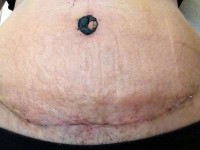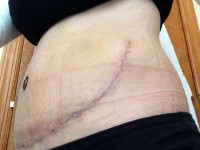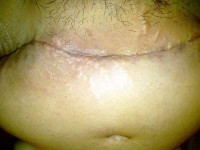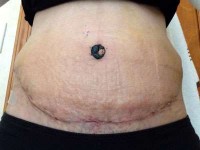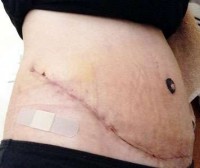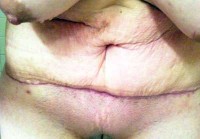Tummy tuck without drains
Traditional abdominoplasty requires the use of drains post op to remove fluid that can collect under the abdominal flap.
Most surgeons place 2 or more drains, which are removed when drainage slows. In2000 we introduced a suture technique that securely anchors the skin flap to the underlying tissues.
This technique and have been used successfully in our practice for over30 years. In 2012 we published the results of nearly 600 cases PTS abdominoplasties,no drains, immediate upright posture.
With only one small fluid collection. Many surgeons have adopted this approach. Many still use drains q (Harlan Pollock, MD, Dallas Plastic Surgeon)
Drains after a tummy tuck
Most plastic surgeons use drains after a tummy tuck. However, there are many good surgeons that do not. As in most things related to plastic surgery, there are many ways to approach the same problem.
I hope the presence of drains will not be the determining factor of deciding to proceed with a tummy tuck or not. The recovery of a tummy tuck can be tough for the first couple of weeks but the long-term results can be wonderful. (Naveen Setty, MD, Dallas Plastic Surgeon)
Use of surgical drains
The use of surgical drains can be individualized. When there is wide undermining of tissue and a potential dead space opened it is usually beneficial to place a drain. To me the drain has two functions, it removes fluids from this space and the negative pressure helps the tissue re drape.
With every surgery there is some seepage of blood. This blood staining of the tissue can lead to prolonged recovery time and increased pain. So many times a short term use of a drain yields a better long term result. (Jeffrey Zwiren, MD, Atlanta Plastic Surgeon)
Drains or no drains
Drains are typically placed for 10 to 14 days after a tummy tuck to decrease the risk of seromas. However, there are surgeons who do not place drains and opt to tack the abdominal skin flap to the abdominal wall using many sutures thereby obliterating this potential space.
I prefer to use drains, but I also place these sutures as an added measure to prevent seromas and to decrease the overall tension on the abdominal incision. (John Nguyen, MD, FACS, Houston Plastic Surgeon)
Are drains absolutely necessary?
I would base the decision on the results and not necessarily on the methods used to achieve the results. (Kenneth B. Hughes, MD, Los Angeles Plastic Surgeon)
Drains not needed for tummy tuck
Drains are absolutely not needed for tummy tucks if your surgeon properly uses a technique called progressive tension sutures.
This is where the skin flap from the tummy tuck is stitched back down to the abdominal wall from which it was detached during the early stages of the surgery.
By using these sutures, the potential space between the skin and the abdominal wall is obliterated and seroma fluid is no longer able to accumulate, making drains unnecessary. Without using progressive tension sutures, I would recommend using drains for about 3-7 days. (William T. Stoeckel, MD, Raleigh-Durham Plastic Surgeon)
Tummy Tuck and drains
Many times tummy tuck is done without drains. Even in those situations sometimes surgeon might decide to use drains in case he feels that they are needed. There is nothing wrong in using the drains.
Nobody should guarantee that they will do surgery without drains. Drains add an extra layer of safety which may not be needed in all cases, but is certainly needed in a few cases. (Vasdev Rai, MD, Dallas Plastic Surgeon)
Are drains absolutely necessary?
This is an unsettled issue among different surgeons based on their experiences and techniques. Some patients develop hematomas / seromas despite having drains.
However, I believe that most surgeons use them.Blood (Hematoma) can be the best medium for bacterial growth. In addition to draining the blood, drains create negative suction that may aid healing and obliteration of the cavity. (Maan Kattash, MD, FRCS, Los Angeles Plastic Surgeon)
Drains & Tummy Tucks
Unfortunately drains are one of the most uncomfortable parts of a tummy tuck. Patients despise them. They do serve and important function in reducing fluid accumulation by closing the space and lowering your risk of a seroma.
Progressive tension sutures can eliminate the need for drains but they have not garnered widespread acceptance because they are cumbersome to place during surgery. If you are adamantly opposed to drains, consult with a surgeon who uses progressive tension sutures. (Robert F. Centeno, MD, FACS, Fairfax Plastic Surgeon)
